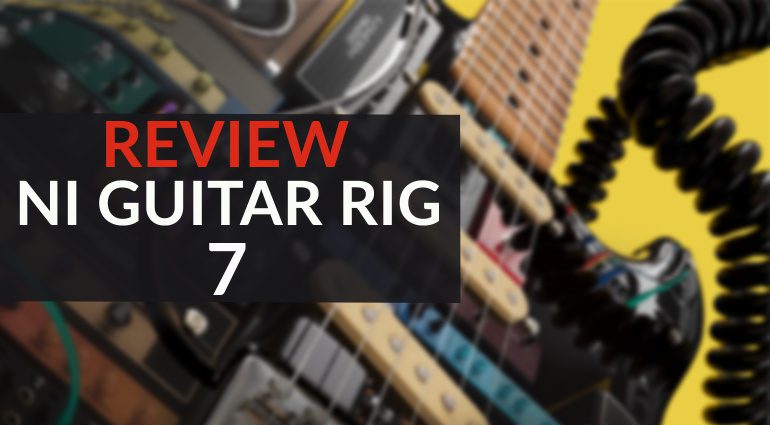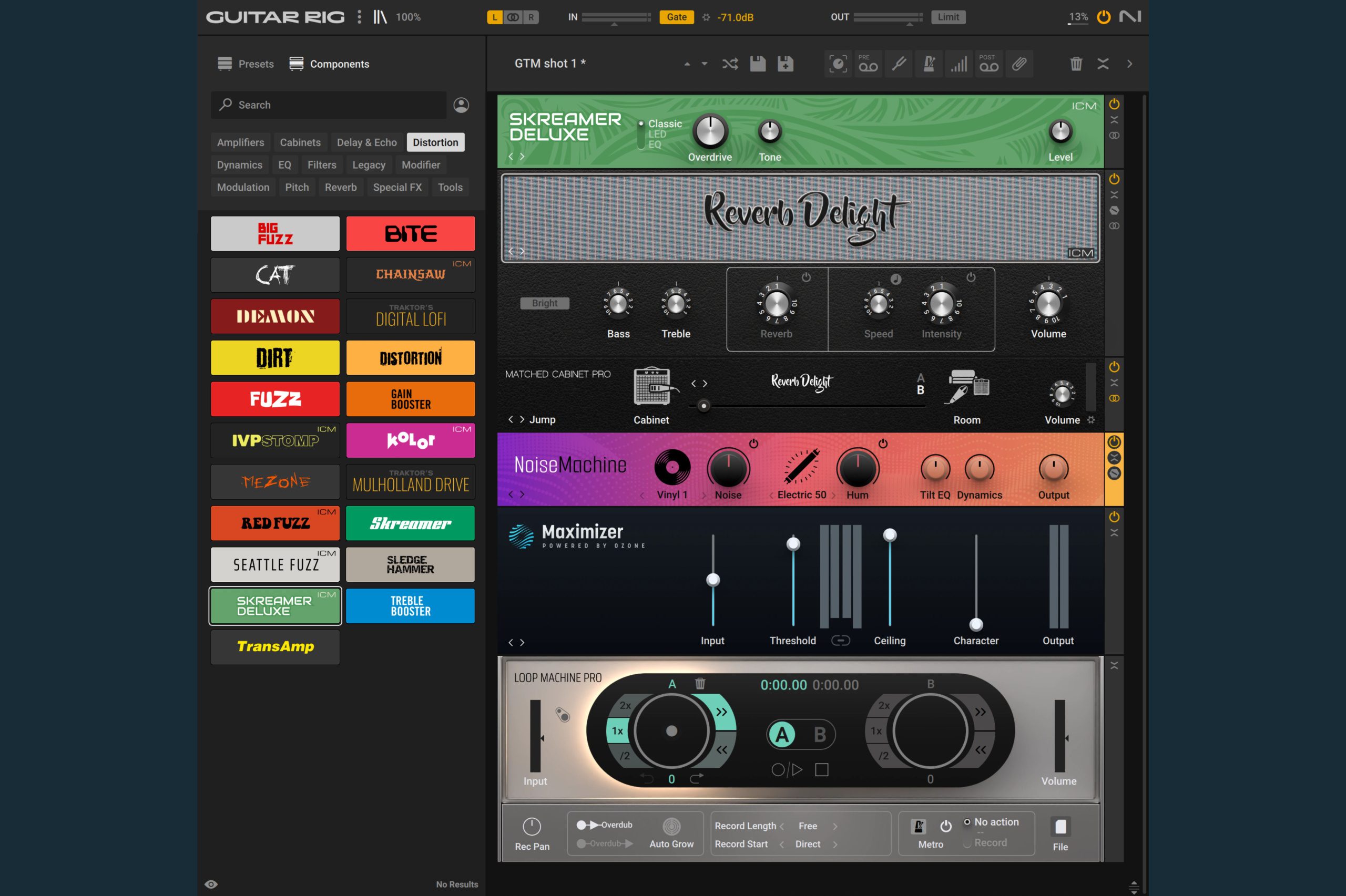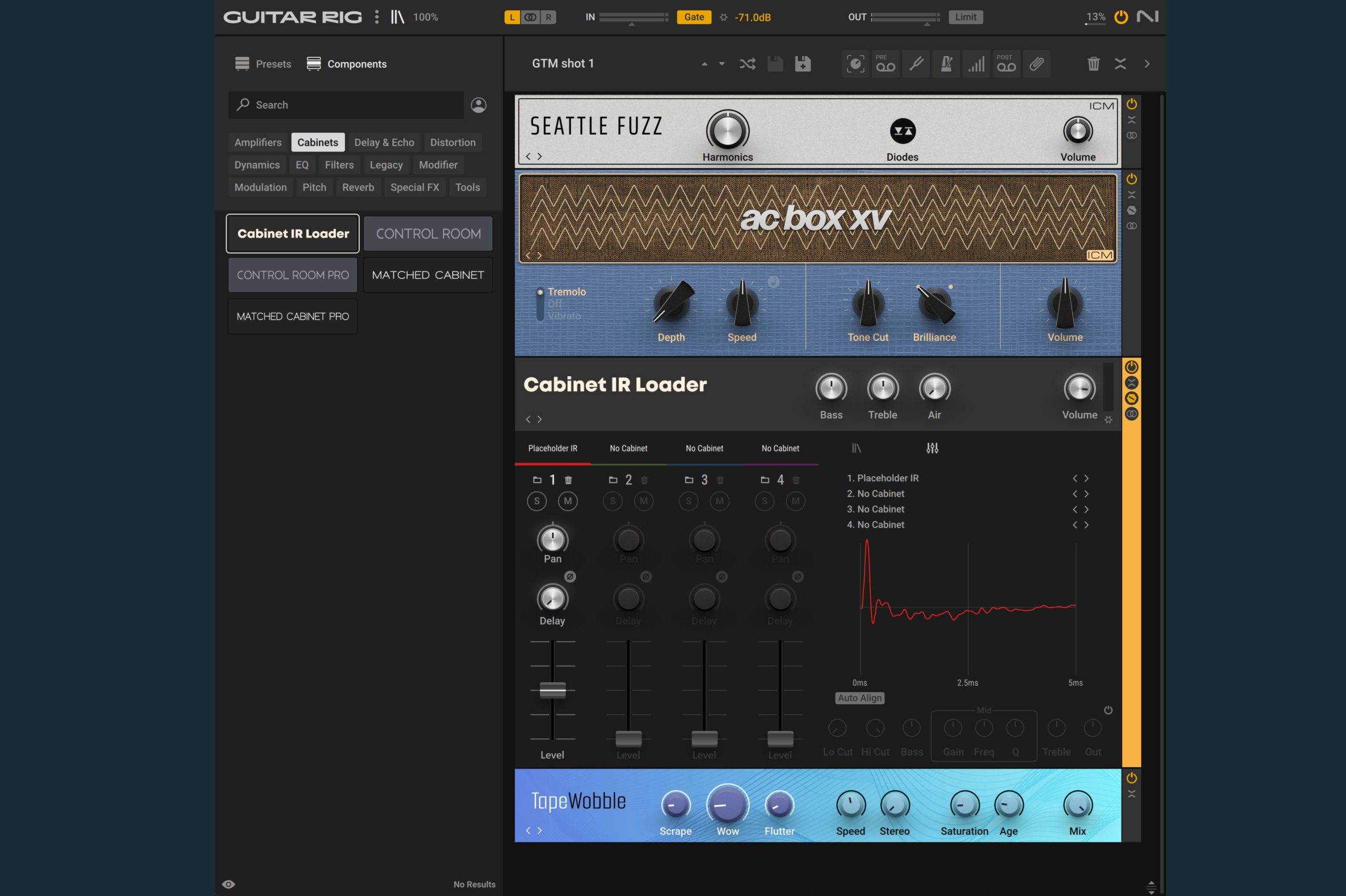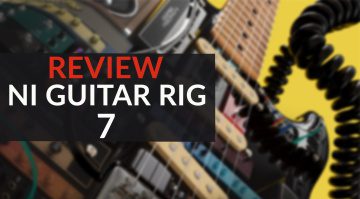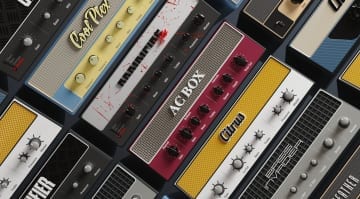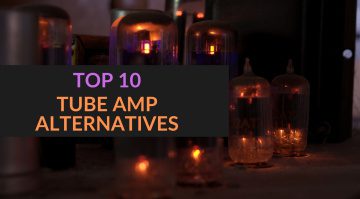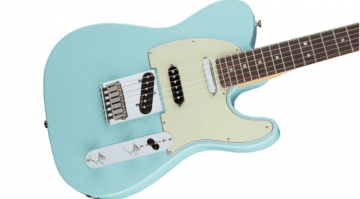NI Guitar Rig 7 REVIEW: Still King of the Hill for amp modelling?
In this NI Guitar Rig 7 Review, we take a look at the latest version of the legendary amp modelling software. Looking for warm, fat, amped-up guitar tones? Maybe you’re looking to add analogue grit to your mixes? Does Guitar Rig still deliver? Read on to find out…
Guitar Rig 7 – Standout Features
- Extensively featured amp and effect simulator
- New amplifier models based on Vox AC30, Soldano, Fender Deluze Reverb and Ampeg SVT amps
- Additional new modulation effects including Tape Wobble and Noise machine for analogue textures
- New Loop Machine Pro
- Virtual “rack” for creative signal processing
Guitar Rig 7 Review
It seems crazy to think that Guitar Rig was first launched almost 20 years ago! Back then, Guitar Rig was something of a revolution, offering control and adjustability unmatched by contemporary modelling. It soon found favour both in the studio and live with many professional acts. I remember mixing front-of-house sound over a decade ago for a band whose guitarist was using Guitar Rig. It was the very first time I’d ever heard an amp sim that was “close your eyes” convincing.
However, it’s now 2023 and amp sims and modelling are now the norm rather than the exception. Nowadays, there’s a lot of competition from both software and hardware modellers and profilers. When NI asked if I’d like to make a Guitar Rig 7 Review, I jumped at the chance. Is my old sonic favourite still King of the Hill?
Getting Started
I used Live 11 Suite as a host for NI Guitar Rig 7, although you can run Guitar Rig as a standalone app. Installation, was, in my case, a bit of a faff. You’ll need the Native Access app installed on your machine in order to register Guitar Rig 7. However, it was not immediately obvious how to register the software. A couple of emails back and forth between myself and NI had the issue ironed out quickly; this may have purely been down to me receiving an advanced copy for review.
Loading up Guitar Rig 7 in Live Suite, you’ll quickly be making noise. There’s a raft of curated presets that you can search via instrument or source type. It’s worth emphasising the point that Guitar Rig 7 has much more scope than being purely an amp-sim for guitars.
I should also point out that Guitar Rig 7 is processor-hungry! On my M1 MacBook Pro, Guitar Rig 7 accounted for around 25% of the CPU load shown during a session! Something you may wish to consider if you’re running an older machine or sessions with a high track or plugin count.
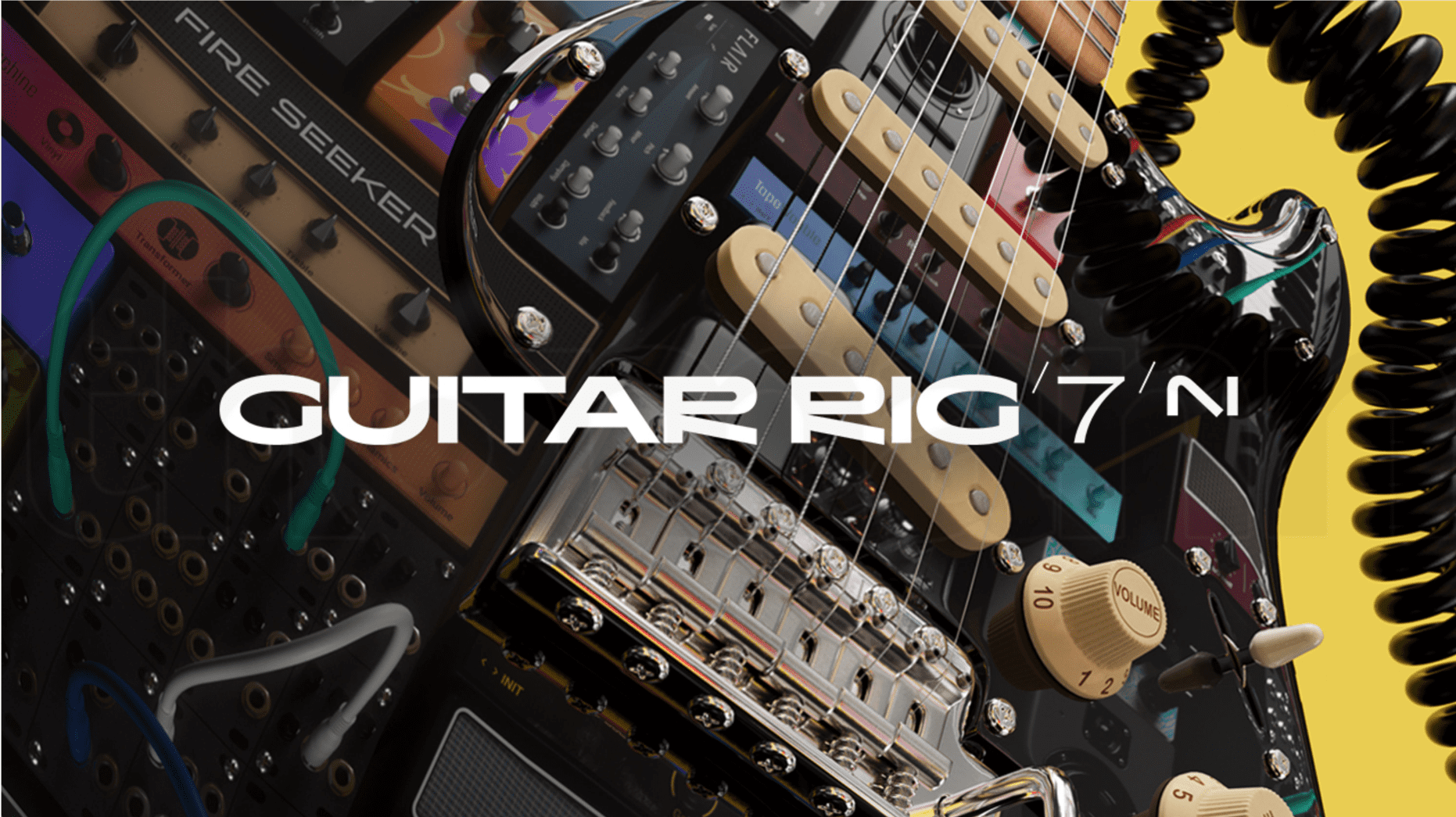
What’s New?
You’ll find over 100 new rack presets in Guitar Rig 7, curated by artists such as Yvette Young, Erik Krasno, Rammstein’s Richard Z Kruspe and many more. As I’ll get into shortly, these new presets are a real selling point for Guitar Rig 7.
Additionally, there are new “lo-fi” components, deliberately designed to distress and distort your signal. Ever wanted your music to sound like it was patched through an 80s VCR? Now you can!
Sound Check
Like most users, I plugged in a guitar to my audio interface and loaded up a preset that approximated my own, physical guitar rig. Guitar Rig 7’s interface is fairly straightforward to navigate and in no time I was ripping through preset after preset.
The artist presets are a superb starting point for many users, as it will get you a “ballpark” amp, cabinet and effects chain ready to go. I particularly liked some of the clean guitar presets; for atmospheric, ambient and experimental tones there’s a lot on offer here.
Equally, the bass guitar rigs are extremely useful and do give the impression of a refrigerator-sized bass rig, miced up in a room. I can easily see myself using Guitar Rig 7 in future for convenient and high-quality bass guitar tones.
Overall then, you don’t really need to know a great deal about guitar amps or real-world patching to achieve a decent amp tone.
Versatility
Shortly after being released, users started to put Guitar Rig to uses other than just amp modelling. Viewed as an “analogue style signal processor” Guitar Rig 7 is a hugely powerful tool. I had great fun adding dirty, filtered echos to drum loops, for example. Once again, the curated presets provide a superb starting point.
Additionally, Guitar Rig 7 continues to offer an Impulse Response loader; a great additional feature that expands the useability and tonal options of the package.
You’re probably reading this Guitar Rig 7 review, thinking that this is a software package beyond reproach, right? At under 200 bucks or the price of one boutique guitar pedal, you get all of this processing power and versatility. So what’s the catch?
Conclusion
As a guitarist surrounded by some lovely vintage amps, I have to be honest and say that none of the amp models “felt” particularly authentic. Yes, there’s touch sensitivity here and yes, the Marshall models sound like a Marshall and the Fender models sound like a Fender, but…
Amp modelling has moved on a lot in the last decade, and hand on heart, I’m not sure that NI’s amp modelling is as ahead of the curve as it once used to be. That doesn’t mean it sounds bad though, and as I found there are some superb tones and useable textures to be had from Guitar Rig 7.
What’s important is to view what Guitar Rig 7 offers for the money. Is it the last word in touch sensitivity and playing dynamics for a guitarist? In my view, no, it isn’t. If you’re looking for a good, solid, base amp tone then you may be better served by other dedicated products.
What Guitar Rig 7 does do superbly well, however, is provide a huge array of inspiring patches. Maybe you want to quickly see if a particular amp tone is right for a guitar part? Maybe you need to quickly track some bass for a song idea? No problem, you won’t be disappointed.
Equally, the “rack” style concept still allows for a huge amount of tonal experimentation. If you’re using Guitar Rig 7 as a plugin processor then any misgivings I have over feel and tonal authenticity are a moot point
Overall then, Guitar Rig 7 is still a worthwhile purchase for the money and a great tool to have in your plugin folder, even if it is feeling a little tired in places.
More Information

 3,6 / 5,0 |
3,6 / 5,0 | 